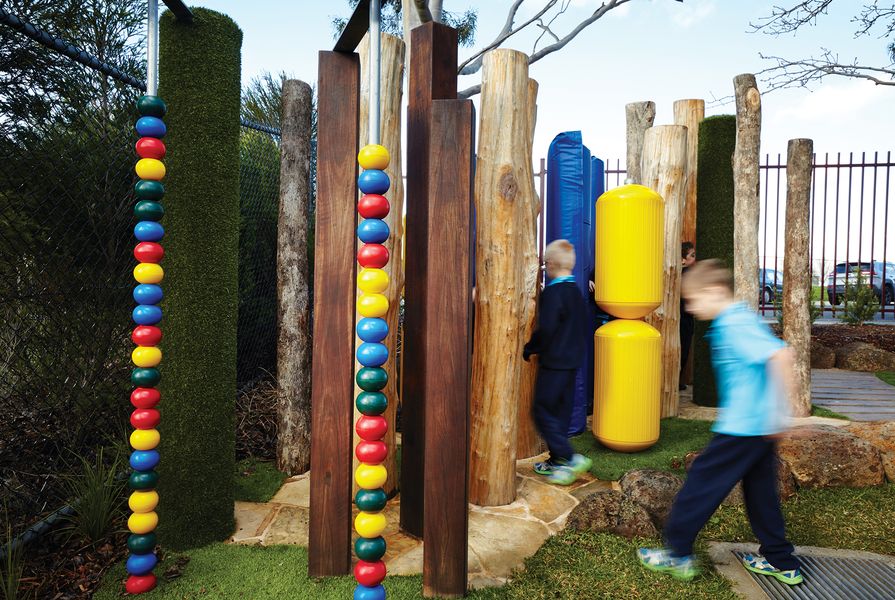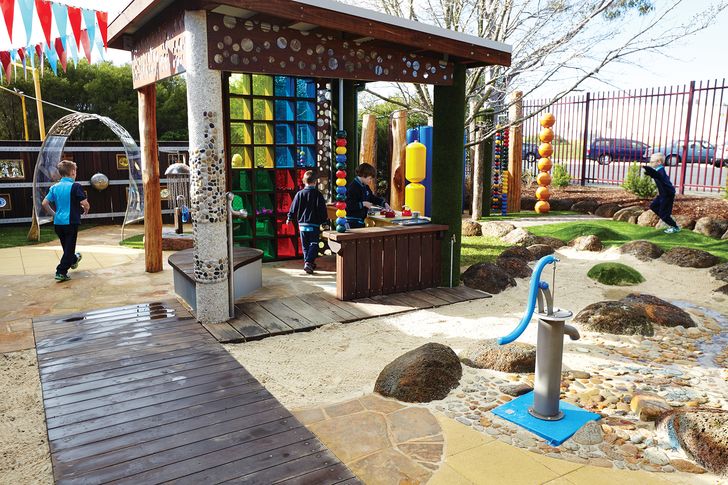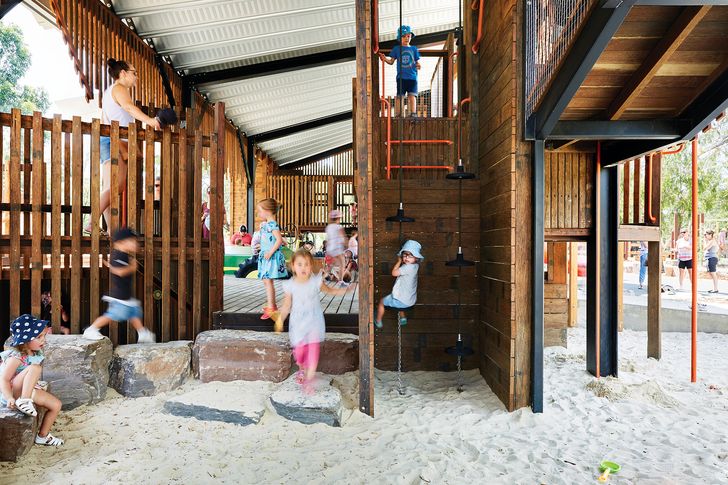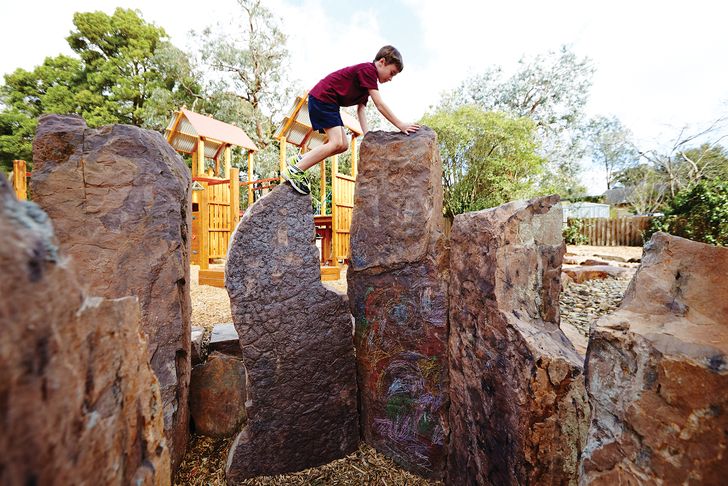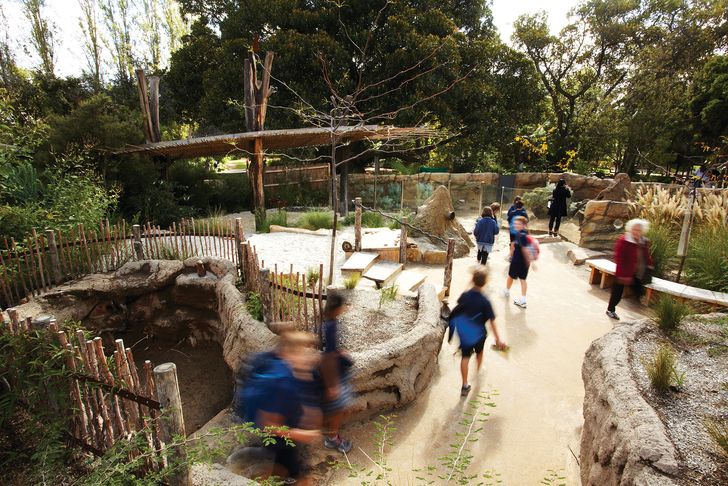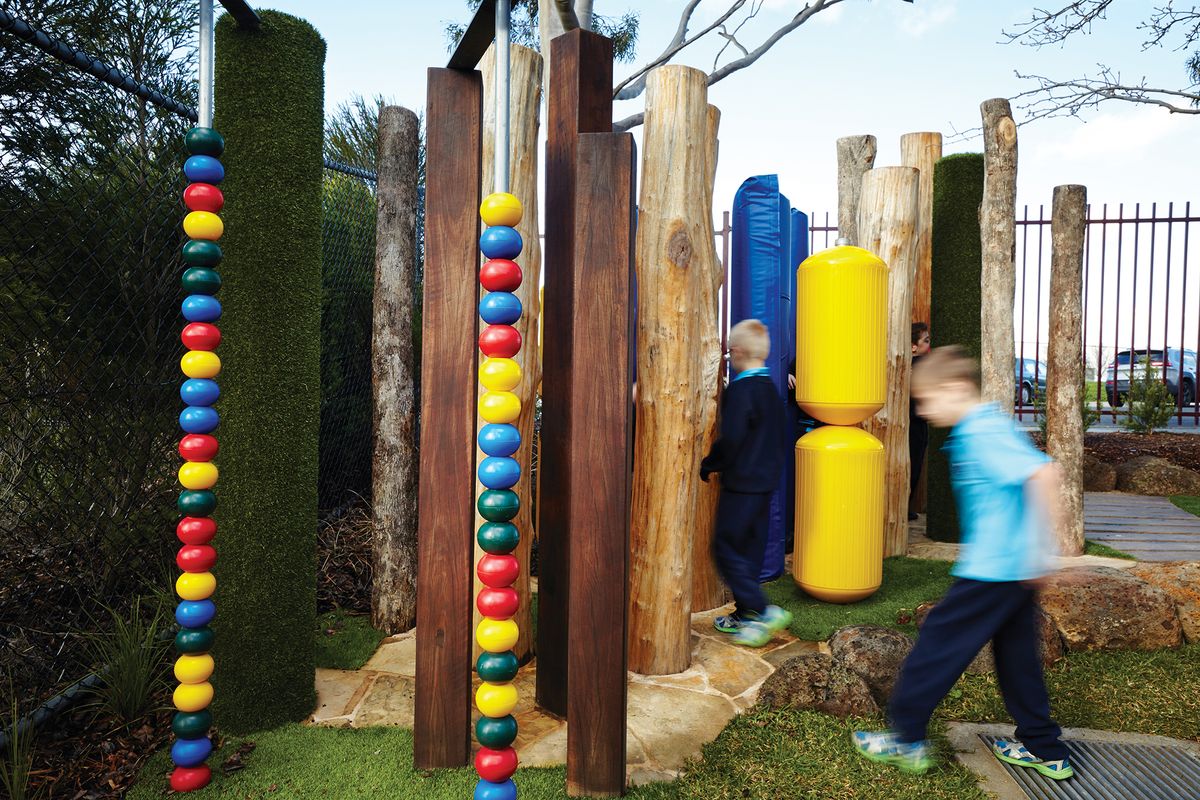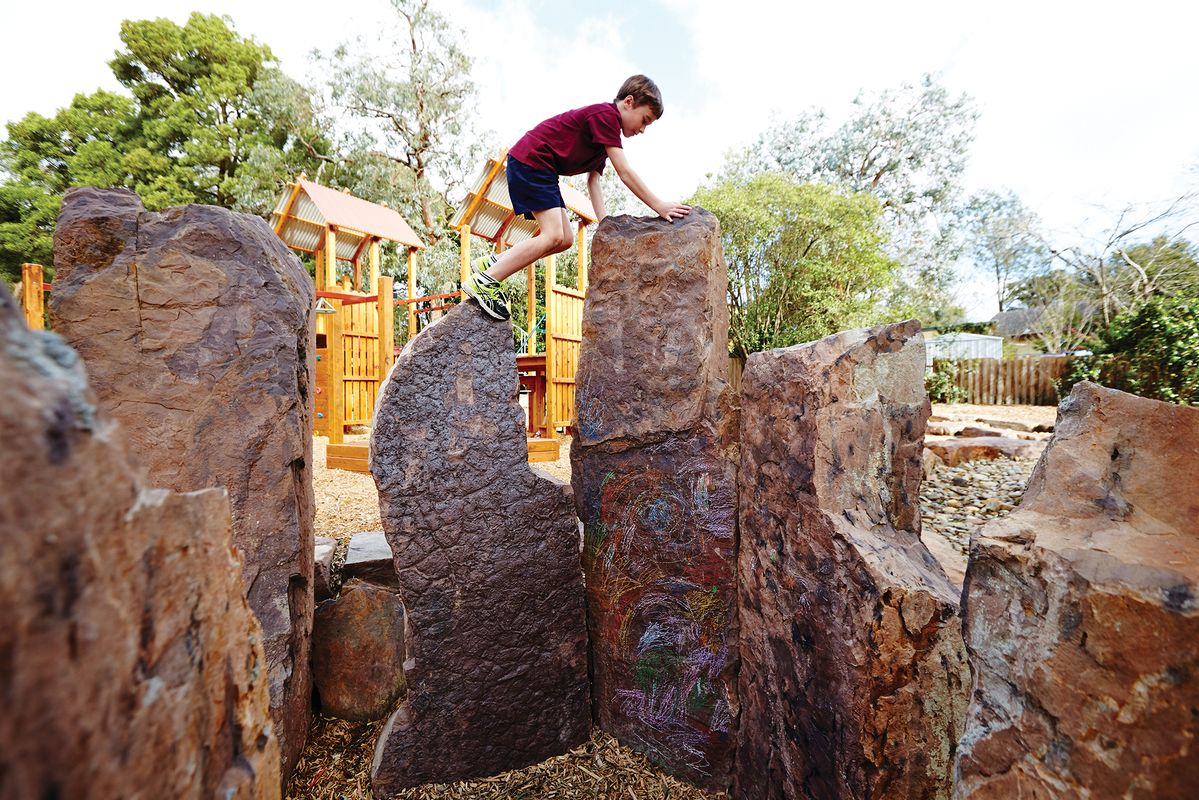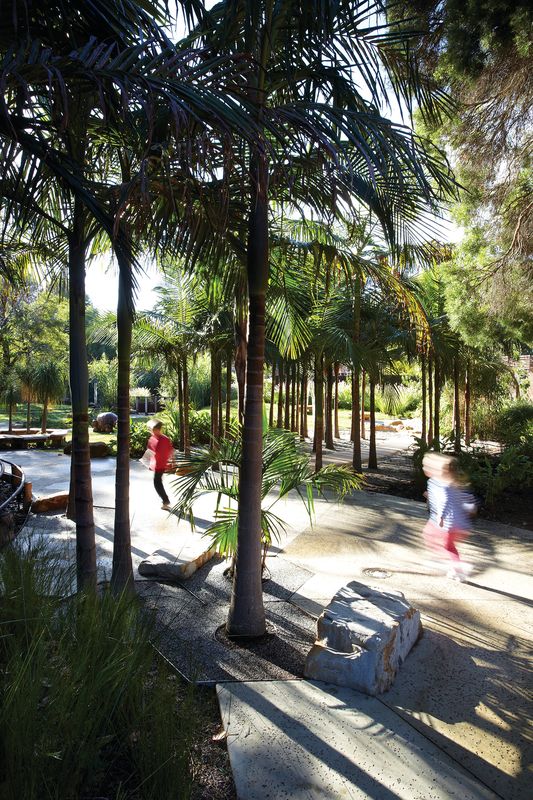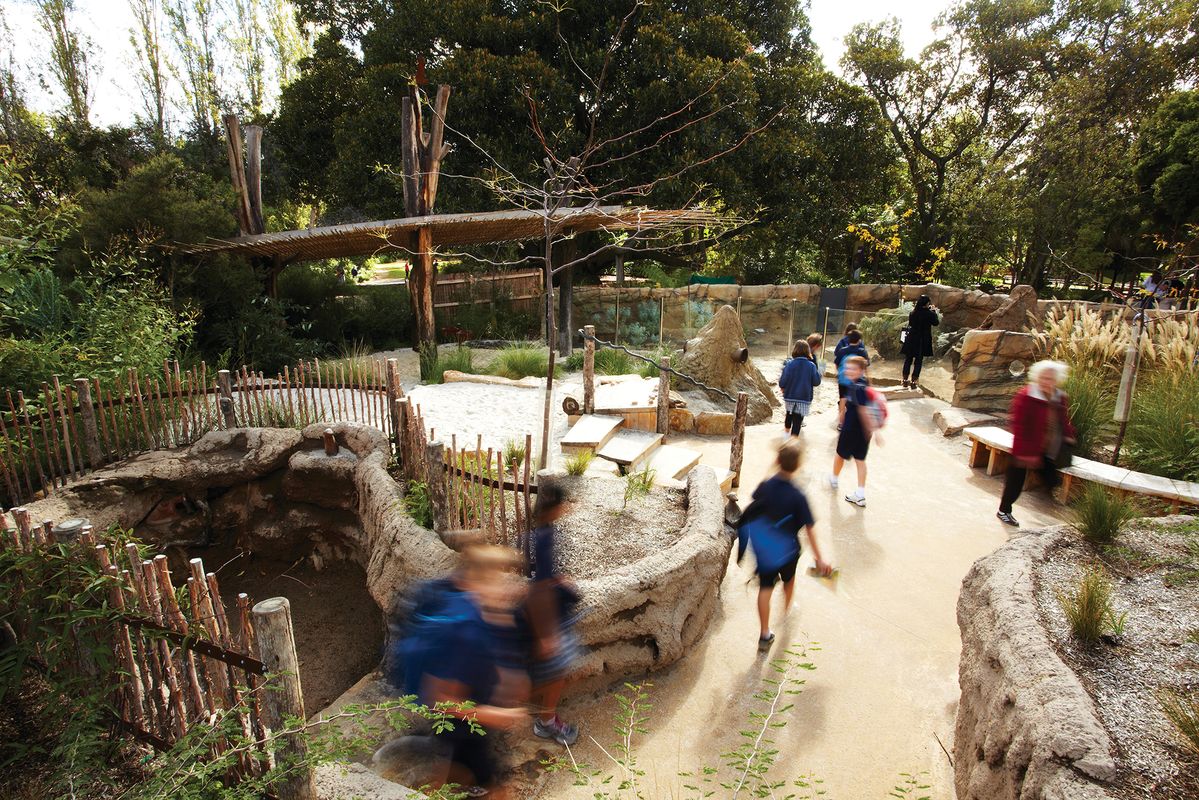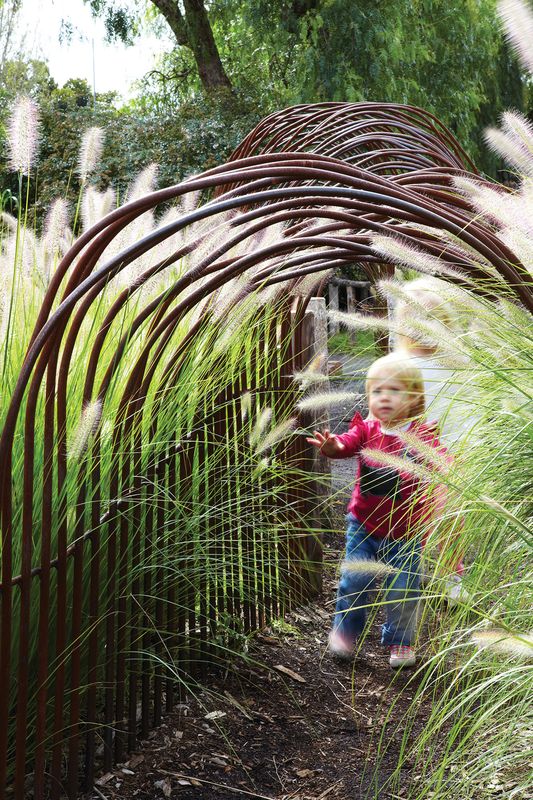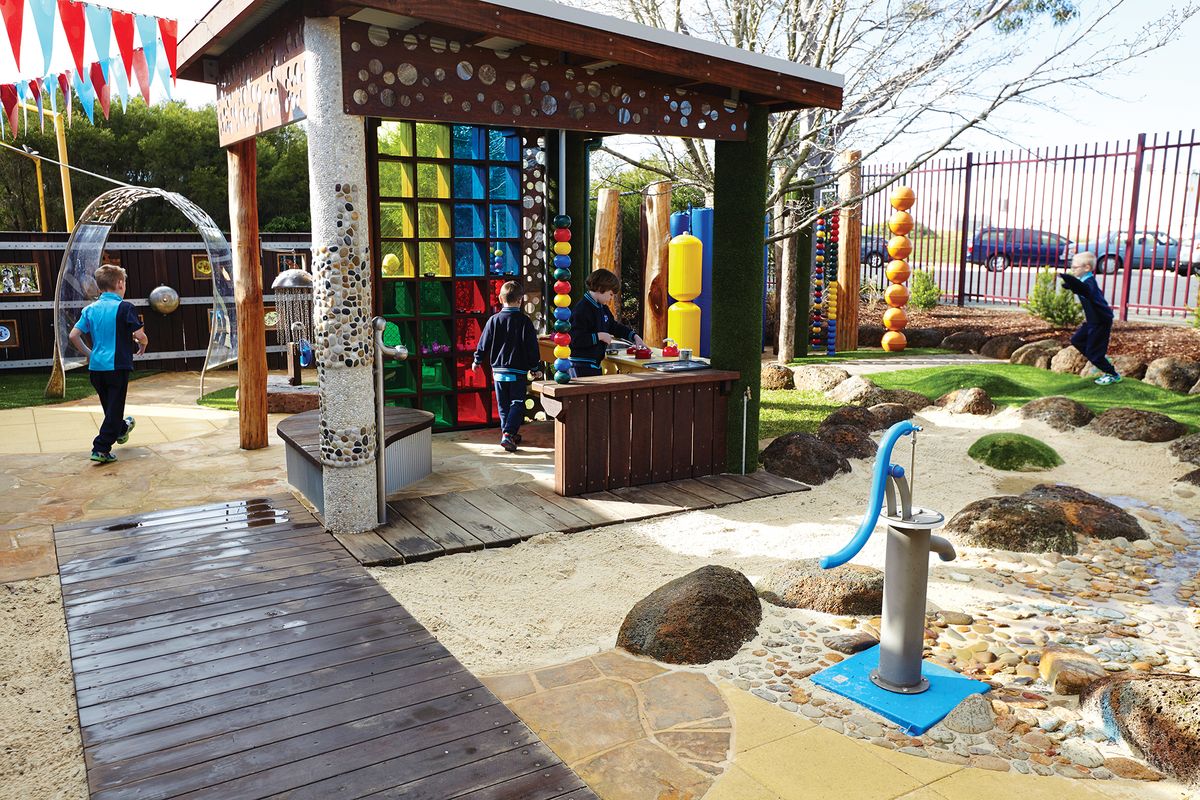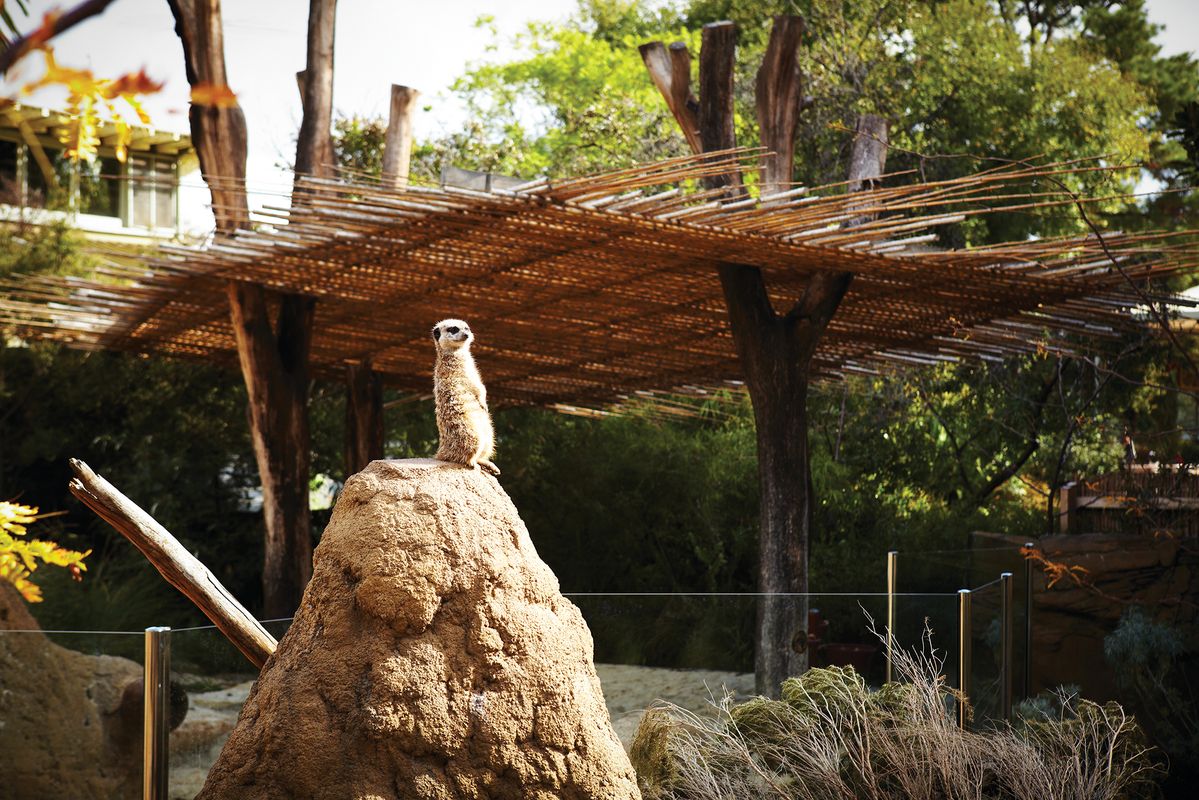When we meet at the practice’s studio in Melbourne’s Carlton North, its founder is keen to deflect focus from herself. “The story doesn’t have to be just about me, does it?” she asks. Indeed, Jeavons Landscape Architects (JLA) has evolved from its early days, which found Jeavons working from home as a sole practitioner. Today, some three decades later, Jeavons and co-director Bruce Grillmeier lead a close-knit team of dedicated designers who have collectively built an impressive portfolio of beautifully crafted, carefully considered play spaces.
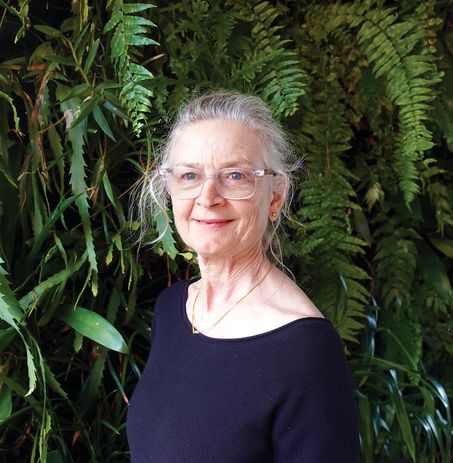
Mary Jeavon, founder and co-director of Jeavons Landscape Architects.
Designed by former JLA senior landscape architect Felicity Brown, the sensory courtyard at Marnebek School (a school hosting children with intellectual disabilities) is an exemplary project, which earnt the practice a Landscape Architecture Award in the Small Projects category of the 2017 AILA VIC Awards. Here, Brown collaborated closely with therapists to design a space filled with enticing, inadvertently therapeutic details that respond to the students’ complex and particular needs. More recently, the team kept inclusive design as a central concern when asked to rebuild one of their earlier projects that had been destroyed by fire. The Eltham North Adventure Playground, a collaboration between Jeavons Landscape Architects and Gardiner Architects, has been carefully updated to ensure that accessible features, such as ramps and seating platforms, are well resolved within the new design.
At Marnabek School, a kaleidoscope of colours and textures offers students a vibrant and multisensory environment.
Image: Andrew Lloyd
“For people with varied disabilities, tiny details can make a huge difference to whether they can participate or not,” Jeavons points out. The project is testament to how processes of focused attention and critical reflection are embedded in the practice’s culture. “We need to understand how different people will use a space. For kids with disabilities, it’s about ensuring they can be near their friends and play socially. The idea of producing a form that looks beautiful on plan, that no one will see unless they’re in a drone, is not good enough,” Jeavons says.
Sometimes, however, even design itself needs a champion. “Recently we did a fee proposal for a school and they said they thought the cost was exorbitant, that they’d got three free designs from play equipment manufacturers.” Rather than competing against other designers, she recalls, “we were competing against the [very] idea of design!”
JLA’s updated design for Eltham North Adventure Playground offers experiences for children of all abilities.
Image: Tess Kelly
When Jeavons was starting out in the late eighties, design for play was an alien concept, with treated pine-dominated playgrounds, swiftly followed by boldly coloured steel and “dreary modular stuff” the norm. It was the landscape architect’s sister Sally Jeavons, head of recreational planning firm @Leisure, who first sparked her interest in the theory of play.
“Sally made me aware that play, rather than being trivial, is really significant. If children can’t play then this can impact their whole development,” Jeavons says. Later, the designer used her university masters research project to map children’s territories, defined as the places they were allowed to venture free from supervision.
“That project gave me a strong sense of the exceptionally detailed perception that children have of their world. A puddle or a little thicket of vegetation can be way more significant to children than we, as adults, could imagine. Unless we observe their behaviour closely and talk to children, we miss a lot.”
Rocks for clambering, a dry creek bed and the creation of a natural setting characterize JLA’s design for the playspaces at Tintern Grammar.
Image: Andrew Lloyd
The relationship between space and behaviour, or “affordance” (a term coined by American perceptual psychologist James J. Gibson in the sixties), remains a particular interest for Jeavons, who is fascinated by how different cues in the environment can determine how children will engage with a space. One example: “Put in a low wall and you can almost guarantee that kids will balance along it,” she says. For Jeavons, it’s clear that these activities bear little relationship to aesthetics, rather, “what children can do in a space, is more important than what it looks like.”
The different ways that children and adults perceive a space – and therefore how each group imagines it should look – plays out regularly in the studio’s many projects. This tension is particularly noticeable in nature play spaces, which often feature areas left un-designed, such as the much-maligned digging patch. “If people don’t realise that unstructured play is important, then why would they support a messy, dirty looking place?” says Jeavons. The idea of embracing untidy space in a design can sometimes also be a challenge for landscape architects. “Our profession [needs to] overcome the temptation to over-design public space … [we need] to hold firm against over-sanitizing our parks, open spaces, school grounds and early childhood centres,” Jeavons has written.
“There are all these interconnections between access to nature, physical movement and mental health,” she says, which makes providing opportunities for child-led, unstructured play opportunities ever more critical.
The Melbourne Zoo’s Growing Wild precinct evokes the animals’ habitats through a palette of natural materials and land forms.
Image: Andrew Lloyd
Advocating for open space and the natural environment has always been important to Jeavons and the studio – an aspect Jeavons acknowledges is particularly pressing now,at a time of rapid urbanization and environmental collapse. “There’s a risk that people will become disconnected from nature if they don’t have access to it in their everyday world, and this [will have consequences for] future advocacy on environmental issues.”
Fostering such a connection with nature in children was a key ambition for Melbourne Zoo’s Growing Wild exhibit, which involved the development of a new immersive education and play precinct for young children. Jeavons believes working on the project helped foster a greater understanding for her of the importance of proximity to nature, an understanding that fuels her when advocating for the inclusion of living turf and plant materials, particularly in the design of childcare centres.
“If kids grow up surrounded by fake grass, in inadequately sized rooftop childcare centres [with no natural plantings], or on their screens, then they’re not going to give a toss about nature,” she says.
Digging, collecting, observing and building are encouraged at the Growing Wild precinct, as ways to learn different animal behaviours.
Image: Andrew Lloyd
After 32 years of practice, Jeavons remains a passionate champion of design for play. It’s work that reminds her why it’s important to remain hopeful: “Young people are so clever and innovative. They will rescue us! It’s why I think training and mentoring is so important – and giving children good play opportunities is a solid place to start.”
Source
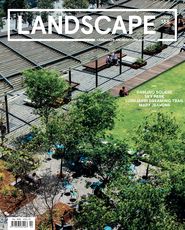
Practice
Published online: 20 Jul 2020
Words:
Lucy Salt
Images:
Andrew Lloyd,
Tess Kelly
Issue
Landscape Architecture Australia, May 2020

